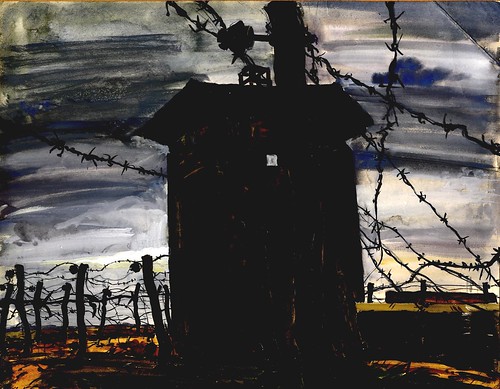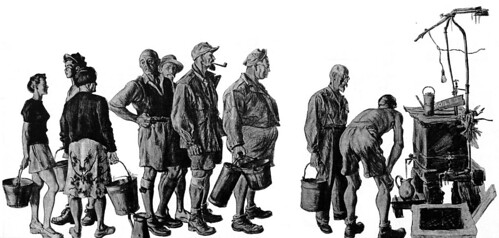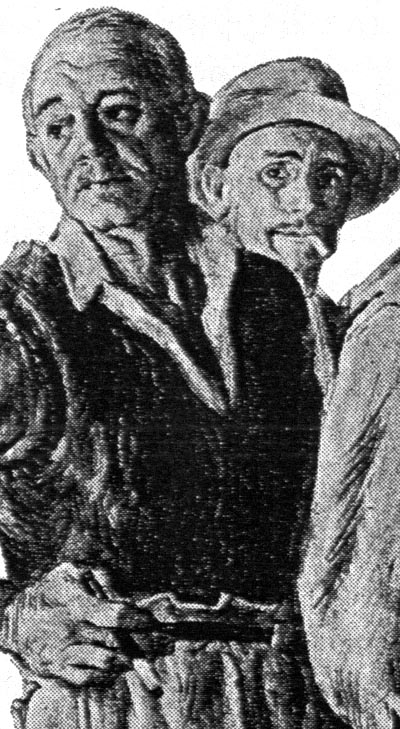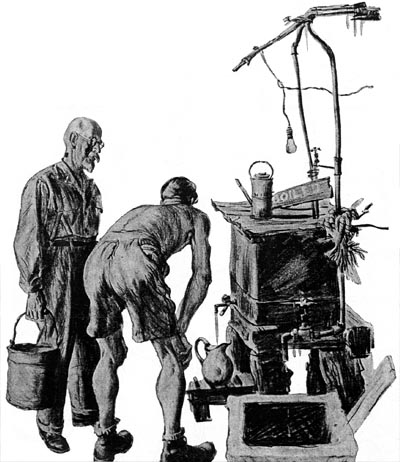Thanks to Kim Smith, daughter of the late William A. Smith, we are fortunate to have this first-hand account of the artist's experiences inside the walls of Weihsien Prison, a P.O.W. camp run by the Japanese in Shantung Province, China during W.W.II.

Smith was serving with the OSS in China when he was assigned this special mission and spent a month with the internees. He both wrote and illustrated the following article for the July 1946 issue of Asia and the Americas magazine, employing sketches and paintings he did during that time. His story begins below...

"The former Presbyterian Mission at Weihsien, in Shantung Province, China, was converted by the Japanese into a prison for fifteen hundred civilians, who were held there for two and a half years."

"On August 17, 1945, a seven-man OSS team commanded by Major Stanley Steiger parachuted from a B-24 flying about four hundred and fifty feet above the internment center. This was one of a number of missions, which included those resulting in the release of General Wainwright at Mukden and the Doolittle fliers who had been held at Peiping. The OSS men landed uncomfortably in a field just outside the electrified barbed-wire entanglement surrounding the compound wall. Taking up defensive positions until they could judge their reception by the Japanese, they were startled and momentarily confused by an unexpected piece of luck. The internees, overwhelmed and hysterical with joy at seeing the men drop from a plane with the American flag painted on the underside of its wing, defied the armed Japanese sentries and burst through the gates to greet their liberators. The confusion caused by these people, who hadn’t been outside the prison walls in two and a half years, so distracted the sentries that no attempt was made to take action against the Americans who had jumped in."

"All returned within the prison walls, happily bearing the Americans on their shoulders. The psychological advantage thus achieved was a valuable precedent for later positive demands that the Major mad upon the Japanese. Inside the gates conferences were held which resulted in the surrender of the camp. One of the conditions of the surrender was that the Japanese should continue to furnish sentries to guard the camp against any possible outside danger."

"The next day Major Steiger arrived at the airport to meet a supply plane and found two hundred Jap soldiers in battle positions around the field. The Americans signaled the plane to return to Hsian without landing and the Major immediately demanded an explanation from the Japanese authorities. The ensuing stormy session was a great victory for the twenty-seven-year-old American Major. After this incident the Japanese became docile and extremely cooperative."

"Several days later I was flown in on a special mission for Col. Richard Heppner, commander of all OSS operations in China."
* My thanks to Kim Smith for providing both the art and article for this week's topic. Our story continues tomorrow.
It's always a pleasure to read more about Smith, and to be reminded of his special talent.
ReplyDelete...a shame there isn't a monograph on william smith.....great stuff leif...
ReplyDelete